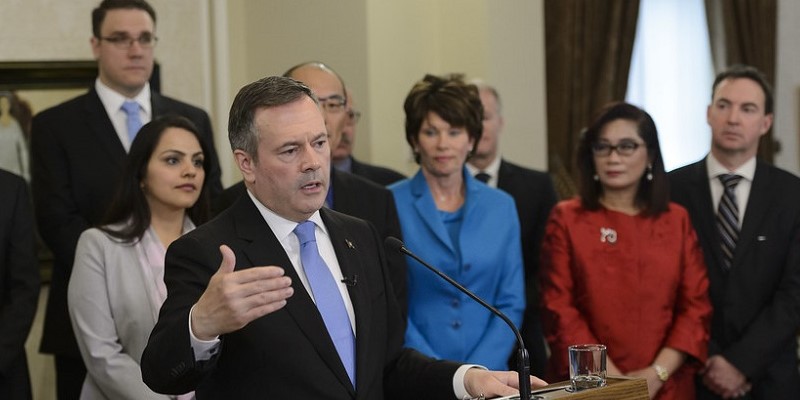Kenney government faces stark fiscal choice in upcoming budget

Finally some good news in Alberta—commodity prices are soaring. West Texas Intermediate oil, a common benchmark, exceeded $US90 per barrel for the first time since 2014 and that means significant resource revenue for the province. As the Kenney government prepares to table its next budget on Feb. 24, it has two options—spend the windfall, putting Alberta on another resource revenue “rollercoaster” or save a share and fix provincial finances for the long-term.
Throughout Alberta’s history, governments often spent most (or all) resource revenue as it came in the door. This led to boom/bust cycles in provincial finances where the province enjoyed periods of budget surpluses during boom times, but then inevitably suffered deficits when commodity prices dropped.
If the Kenney government repeats this cycle, Alberta’s finances will remain vulnerable to fluctuations in resource revenue and it will have missed (again) an opportunity to place provincial finances on a stable long-term path. Put differently, while resource revenues would temper deficits in the short term—perhaps even balance the budget—provincial finances will return to red when resource revenues inevitably decline.
So what’s the solution?
Rather than continuing to spend onetime volatile resource revenue, the government should save a significant portion to re-establish the Alberta Sustainability Fund (ASF). Originally introduced in 2003, the ASF set an amount of resource revenue that could be spent annually. When resource revenues were above that amount, the excess was saved to be used when resource revenues fell below that amount. The idea was simple; save during the good times to finance a stable amount of resource revenue for the budget during the bad times. Unfortunately, the government drained and eventually eliminated the fund in 2013.
If reintroduced, this rainy-day fund could provide much-needed stability for Alberta’s finances. A recent study published by the Fraser Institute estimated the government could fully fund the ASF by 2022/23, ensuring stability in the future when resource revenues fall below the stable amount.
Beyond short-term fluctuations in resource revenue, Alberta must also prepare for the potential permanent decline in resource revenue that has become increasingly likely given recent regulatory changes by the federal government, which will restrain energy development in the province. For this, Alberta should look to another fund—specifically, to reintroduce mandatory contributions to the Heritage Fund.
The province created the Heritage Fund in 1976/77 to save a share of Alberta’s resource revenues for the future, however, the government has not contributed any resource revenue to the fund since 1986/87. A recent Fraser Institute study recommended contributing 25 per cent of resource revenue to the fund annually—contributions to the fund would transform a share of onetime resource revenue into a financial asset that generates income on an ongoing permanent basis for the future.
As the Kenney government prepares to table its next budget, it has an important choice to make. Temper deficits in the short-term or establish a new fiscal framework to save a share of resource revenue and fix Alberta’s finances for the long-term.
Author:
Subscribe to the Fraser Institute
Get the latest news from the Fraser Institute on the latest research studies, news and events.

